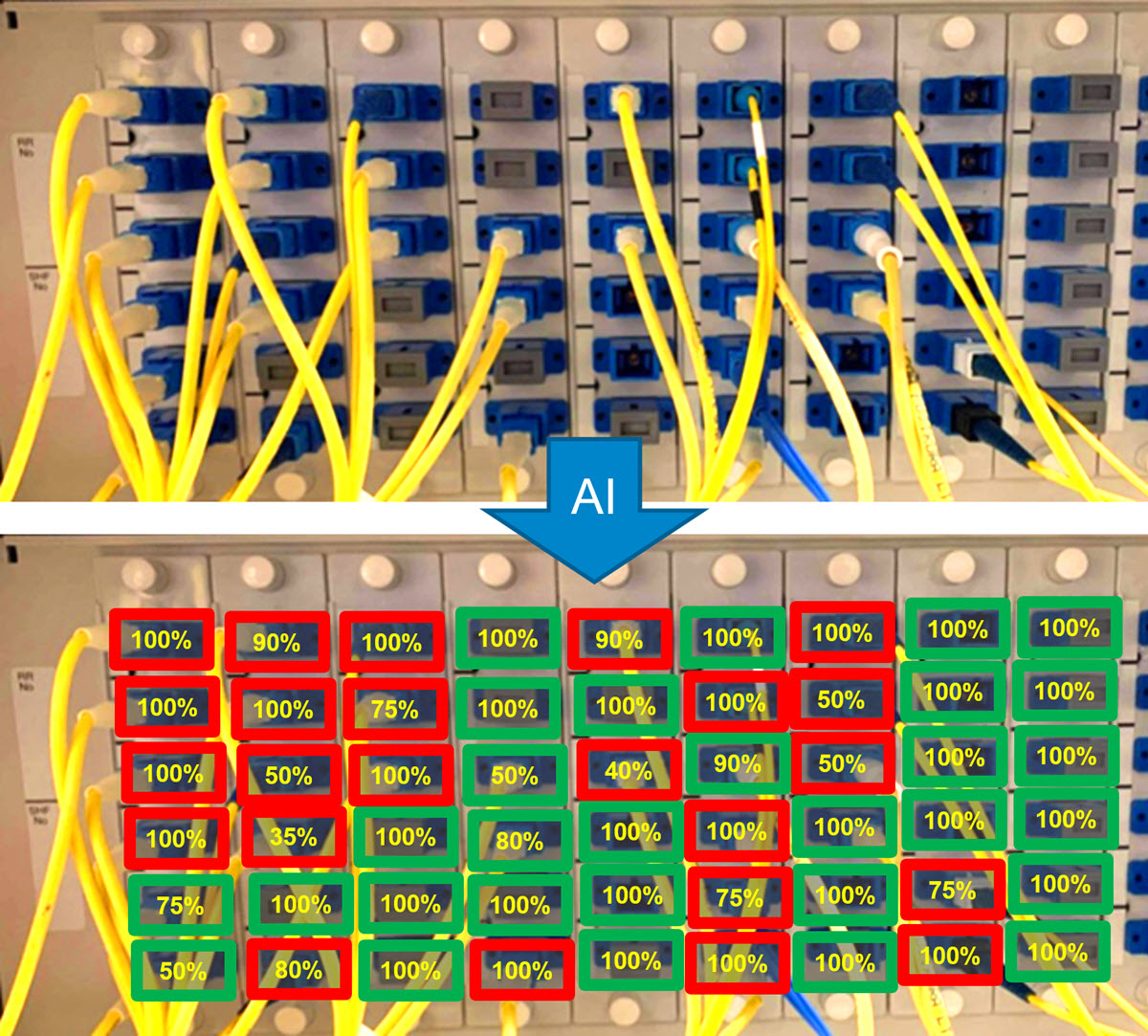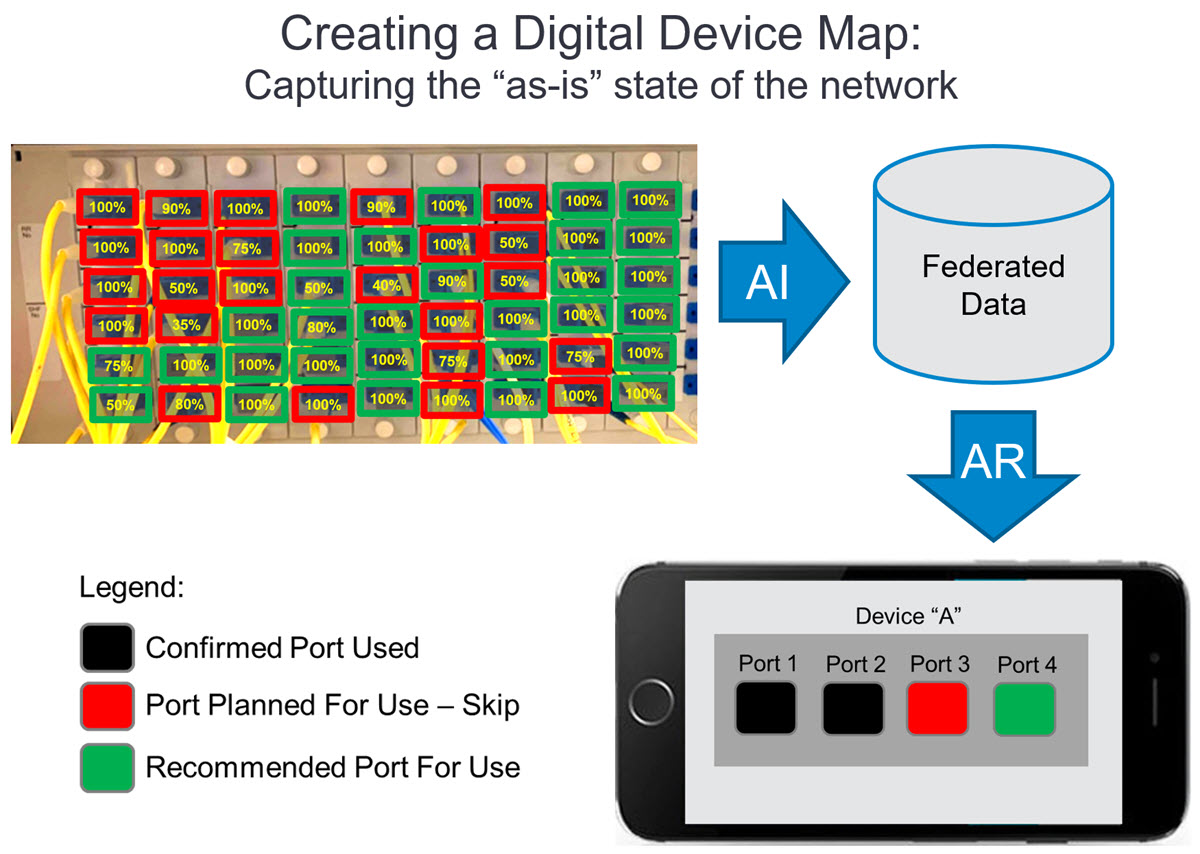An AI/AR Approach to Inventory Network Synchronization
I was recently invited to present a paper on the topic of augmented reality (AR) and artificial intelligence (AI) approaches for inventory network synchronization at SCTE Cable-Tec 2021. Given the level of interest by participants in the use of these advanced technologies, I thought I would share a summary below.
As service providers continue to accelerate their transformation toward automation to meet growing customer demand for faster and better services, they are quickly realizing they can’t automate what they can’t see in the network.
True, with network transformation, more devices can be addressed in the network to discover what is deployed for service. But reality shows us there is still a lot of “undiscovered” passive equipment in the path of a customer’s end-to-end service across these rapidly evolving networks.
As a growing number of service changes occur to keep pace with customer demand, the result is an increasing number of discrepancies between the network and the inventory database used to design these services – thus leading to greater service fallout rates, impact to customer experience and potential significant loss of revenue from dissatisfied customers.
And, while network-to-inventory “manual audits” can provide a snap-shot update in time, most existing inventory systems are unable to stay in lockstep with the “as-is” state of the network – resulting in the need for ongoing audits that can cost service providers millions in expenses they can no longer afford.
Service providers need help now, so introducing approaches that require long-term large-scale people/process change is not viable.
The reality is that traditional manual corrective means are no longer viable to reconcile a large and rapidly growing number of discrepancies between a service provider’s network and their inventory.
AR/AI driven network reconciliation
Instead, service providers need new approaches in tools and technologies that support their evolution toward intelligent network automation and corrects data discrepancies while co-existing with established delivery processes to their customers. Service providers need help now, so introducing approaches that require long-term large-scale people/process change is not viable.
A proposed approach is to leverage existing smart device technology that combines AR and AI with federated data to create a discrepancy detection and reconciliation solution that can be easily used in the field. Federation unifies network resources and services data to create an accurate view that enables the automation of business processes to enable network planning and design and faster roll-out of new services.

In this new approach, a field technician that traditionally would enter the central office and approach a device – in this case a patch panel – to connect a fiber as part of a work order, would first take a picture of the device with a readily available smartphone or tablet. AR software on the smartphone would guide the technician to pan/tilt the smartphone to capture a series of perspectives within seconds – thus having negligible impact on the technician’s allotted time for work. The AI software creates a digital map of the device showing all the detected ports used and available – this is the “as-is” state of the device in the field, as illustrated above.
Through federated operations, the approach compares the device as designed/assigned in the central inventory system with the real-time digital device map captured in the field. The system can then determine the discrepancies between the planned service and “as-is” state of the network and use the AR-enhanced visualization to guide the field technician in completing the service delivery first-time right.

In this example scenario, the work order instructs the field technician to connect a fiber to Port 2 on the panel but in fact that port is already consumed in the field. This discrepancy can arise due to a previous service that was terminated or moved, where the fiber should have been removed, but the previous technician did not complete the task.
In many real-world cases, the field technician will have an agreed protocol in place with the service provider – for example guiding the field technician that if the assigned port is consumed, then take next available, in this case Port 3. The problem in this scenario is that Port 3 looks to have already been planned for another service but not yet deployed, so this protocol would compound the discrepancies between inventory and the network. Instead, the federated operations system can clearly communicate via the AR display the ports that are truly available (i.e., Port 4) and AR would guide the technician to the correct port through their smart phone.
It is important to note that in a connected scenario where the field technician smart device has network access to the AR/AI/federate operations, this full process can all be achieved in just a few seconds – having little to no impact to allocated operations time. In cases where field technician cannot have direct communications to AI, the AR applications can take multiple images for storage and then download them for later processing and follow-up guidance.
The benefits of an AR/AI driven approach
Combining the use of AR/AI technologies with federated operations provides a wide range of data correlation benefits:
- Using vendor and service provider device templates to wireframe the digital device map over the real-time image of the panel to confirm that the device detected is aligned with the device planned.
- Combining GIS data to pinpoint the exact location and devices in scope of the work-order to be completed.
- Generating a real-time list of discrepancies for network/service planners that can document needed changes/adjustments to the service without lengthy delays or error-prone manual updates.
- Guiding the field technician to corrective action that not only stops the current proliferation of discrepancies but allows the reversal of these discrepancies in real-time.

The future of discrepancy detection and reconciliation, with technology available today
Our approach uses off-the-shelf smart device technology with existing AR software to guide a technician in capturing multi-angle images with little time and effort while readily available AI technology quickly digitizes the images and identifies discrepancies between network and inventory. Federated data and operations are key to guiding the technician, through AR, to complete and document tasks first-time right, and, to even correct in real-time reported discrepancies in the field.
Service providers are taking notice of the power of AI for automating operations. Discussions with our customers tend to focus on how an AI/AR approach to inventory network synchronization can help them in real-time across varying scales of network and operations deployment and in cloud, on-premise, or hybrid environments. Contact us today to learn how your organization could leverage this technology to gain operational efficiencies in the field. You can also read the full paper I presented at SCTE Cable-Tec Expo -- either via the event site (login required) or download the paper PDF directly here.
